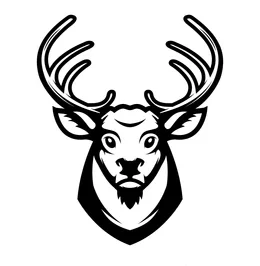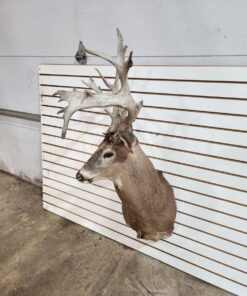Taxidermy Mounts
Taxidermy is the art and science of preserving animal specimens by stuffing and mounting them in lifelike poses. It involves a combination of biological knowledge, artistic skill, and craftsmanship to create realistic displays of wildlife. Here’s a comprehensive overview of taxidermy:
1. Definition and Purpose
**a. Artistic and Decorative
- Aesthetic Appeal: Taxidermy can be used to create beautiful, realistic displays of animals for personal collections, homes, and public spaces.
- Art Form: Many view taxidermy as a form of art that combines sculpture with natural history.
**b. Educational and Scientific
- Museum Displays: Taxidermy is used in museums and educational institutions to educate the public about wildlife, anatomy, and conservation.
- Research: Specimens can provide valuable data for scientific research and studies on animal behavior, anatomy, and evolution.
**c. Cultural and Historical
- Traditional Practices: In some cultures, taxidermy has historical or ceremonial significance, reflecting traditional practices and beliefs.
2. The Taxidermy Process
**a. Preparation
- Specimen Selection: Choose a well-preserved specimen that is free from damage. The condition of the skin, fur, feathers, and bones affects the quality of the final mount.
- Pose and Position: Decide on the pose and expression of the mount, which will guide the entire process.
**b. Skinning
- Technique: Carefully skin the animal, making precise cuts to avoid damaging the hide. The skinning process varies depending on the type of animal and the intended mount.
- Flesh and Fat Removal: Remove all flesh and fat from the skin to prevent decay.
**c. Preservation
- Tanning: Treat the skin to preserve it. Tanning methods include chemical tanning, brain tanning, and other preservation techniques to prevent decay and ensure durability.
- Salting and Pickling: Salt or pickle the skin to inhibit bacterial growth and decay.
**d. Creating the Form
- Form Construction: Sculpt a form from foam, clay, or other materials to replicate the animal’s anatomy. The form acts as the base onto which the skin is mounted.
- Customization: Customize the form to match the animal’s natural shape and posture.
**e. Mounting
- Fitting the Skin: Carefully fit the preserved skin onto the form, ensuring that it aligns correctly and looks natural.
- Detailing: Focus on details such as facial features, fur alignment, and coloration. This includes attaching realistic eyes, ears, and other features.
**f. Finishing Touches
- Painting and Touch-Ups: Apply paint or touch-up details to enhance realism and correct any imperfections.
- Base and Display: Mount the finished specimen on a base or in a display case, integrating it into a diorama or standalone display.
3. Types of Taxidermy
**a. Full-Body Mounts
- Description: Preserve the entire animal in a lifelike pose, showcasing its complete form. This type of mount provides a comprehensive view of the animal’s anatomy and behavior.
**b. Head and Shoulder Mounts
- Description: Focus on the head, neck, and shoulders, often used to display trophies or specific features like antlers or horns.
**c. Furs and Rugs
- Description: Involve preserving the skin with the fur intact, used as decorative items or rugs.
**d. Diagrams and Educational Displays
- Description: Create detailed educational displays or diagrams that showcase specific anatomical features or ecological roles.
Taxidermy combines art and science to preserve and display wildlife in a realistic and respectful manner. It requires skill, precision, and a deep understanding of both anatomy and artistic techniques to create lifelike and enduring representations of animals.




